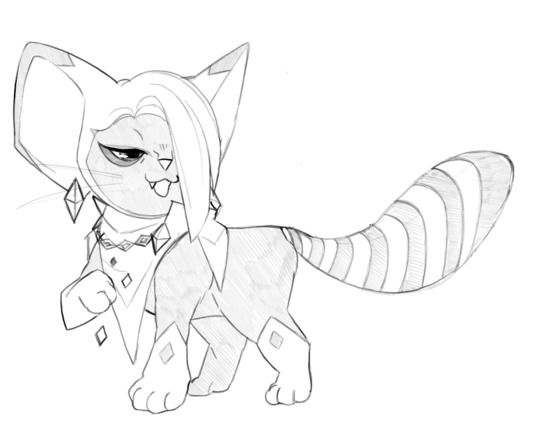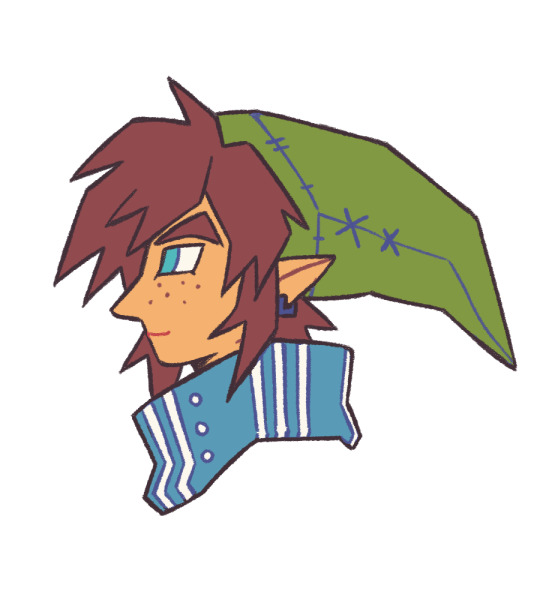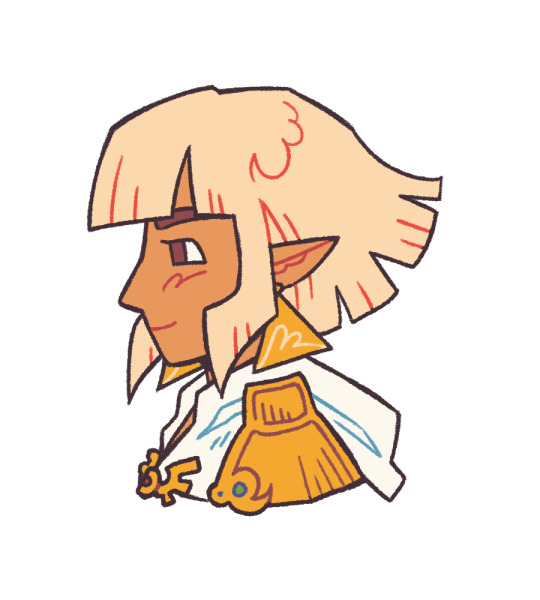#key design elements
Explore tagged Tumblr posts
Text

theyre soft your honour
#my art#jujutsu kaisen#jjk#okkotsu yuuta#inumaki toge#inuokko#inumaki#yuuta#fanart#jjk fanart#timelapse#long time no canon fits !!!#still having the time of my life playing with these brushes#i was just gna do a regular draws to slap on the ask i just got but i decided 2 record it last minute fgdgd#didnt know if an mp4 file would cooperate if i tried to put it under an ask so i played it safe#but know this is fr u anon <3#i ..... cannot believe i am continuing my streak from last night of Forgetting very key and very obvious design elements#last night it was yuuij's sukuna scars.... today it is inumaki's tattoos.......#smh im Slipping fr#breaking news tumblr user hinamie fake jjk fan And fake fanartist :C#its ok tho ! crisis averted!! me forgetting them may be caught in 4k but i Did catch myself before posting th video#that would have been tragic i would have been chased out of this fandom with pitchforks. i wld have been pelted with rocks#anyway i like this piece a lot i like them i like the black/white/blue#VERY happy i got yuuta's hair right without too much hassel#turns out i know how to draw and references r a godsend <3#oh also !!! @ the person who asked about my colouring process this is what i was talking abt re: painting with an underpaint layer#helps everything look cohesive :3
2K notes
·
View notes
Text

ain’t nothin gonna break their stride….!!
#in stars and time#isat siffrin#isat act 6 spoilers#the cloak was a bit of a struggle… not good at animating em#especially on walking animatins#i do have a cloakless version.. didn’t feel like posting it tho lol#i haven’t animated kitties walking enough i need to . draw them more…#do tell if i need to tag more spoiler things for hatlessfrin i really don’t know how to do that#has never tagged spoiler stuff. for some reason. fusi why#i m missing a lot of key design elements for my catfrin :(#my art#GGUAGH I KEEP FORGETTING THAT TAGG!!! SILLY ME……#bananart
160 notes
·
View notes
Text

self indulgent sunday! I made the brain neighbours swap outfits 🩷💚
#my art#kh oc#roadie the key kid#charis oc#overmorrow tfs#I have design elements I love recycling across my ocs oopsie#‘what are they sitting on?’ a block of cheese <3
21 notes
·
View notes
Text

kairi’s outfit post-database recovered !!
i made it as a transition design coming out of kh2 (since that’s what she wore in DBR) into her eventual kh3 redesign that i made ^_^
#beep boop you want fries with that#kingdom hearts#re:kh#kairi#i had a lot of fun making thisss like BWAAAA I LOVE BEING PROUD OF WHAT I MAKE ^_^#decided to go with asymmetry in this one bc its funnn#i took cues from a bit of aqua and rikus designs#aqua especially since before she got this outfit she was going on an adventure with her!!#she has black wrist cuffs but you cant see them (the sleeves cover them)#i should probably redesign my kh3 redesign (lol…) because im not satisfied with it#i will keep the key elements like the petals and the chirithy hood (IMPORTANT.) but everything else needs to be reworked#needs more stars tbh..#thats like her thing ..#speaking of stars. notice how theres so many?? this is because this is the first time she’ll be properly traveling across them!!#thats right im giving you a spoiler: SHES GOING ON THE GUMMI SHIP WITH HER BESTIES!!!!!#WWOOOOOOO HAVE FUN GIRL ^_^
12 notes
·
View notes
Text

He's literally kibty ,
#will draw the over ver of ghirahim and link soon but. ehe#this was absolutely self care#remlits r so shaped...i wanna try to add key elements of their designs so that theyre recognisable tho
91 notes
·
View notes
Text
Hottest JJBA Outfit Bracket - Round 1 Match 34


#n'doul is hot but his outfit is boring#the one not boring part of it is the hair and the earrings#the earrings i love the hair i hate#now bruford? that's a good vampiric design worthy of being one of dio's minions in phantom blood#the hair is obviously the key element but i do love the corset-like top#plus the thigh high boots?? ugh step on me please#(now here's a character i didn't think i'd simp for.........)#jjba bruford#n'doul#jjba n'doul#phantom blood#stardust crusaders#jojo no kimyou na bouken#jjba#jojo's bizarre adventure#who's hotter jjba#hottest jjba outfit bracket
34 notes
·
View notes
Text



after posting my selection of accidentally-slightly-varied designs for these three i went back and redid these profile portraits. they're a fun exercise in stylization tbh
ID: three profile-view portraits of my Link, Zelda, and Ganon. Link has brown hair now, freckles, and a blue scarf with white striped patterns. Zelda has short blonde hair and big triforce earrings, now also sporting a hood on her white undershirt. Ganon has stylized braids across the back of his head, ending in two long segments of hair which fall over his shoulders. end ID
#specifically noting in id either key design elements 2 me like the triforce earrings or links freckles/scarf#or the hair over ganons shoulder bc ive been determined to keep that thru all the design changes lol#and also newer changes like links darker hair or zeldas new hood or keeping ganons hair up instead of loose#zelda au#zelda#link#ganon
163 notes
·
View notes
Text
im upset every time someone says that kip needs to cut his hair or that his accessorizing with a necklace/bracelets/rings/earring is too feminine cause those are legit my favorite parts of his character design aaaaaaaa
and dont even fucking get me started on the way people talk about the eyeliner or the makeup in general 😤
#since he stopped painting the nails (still hoping he brings those back tho!) these are my favorite things like#its what makes him who he is. the key elements to his character design. that IS kip sabian#you cant just tell the man to reinvent himself when hes perfect like this smh#ough im mad#box thoughts
32 notes
·
View notes
Text
To the designer who made Cody's grown-up designs:
I shall find you and tear you apart!
How dare you take away one of Cody's best traits, HIS BIG EYEBROWS!!!! JUST HOW DARE YOU!!!!?? You took away his friendly shape and turned my boi into a triangular shape!!!
AAAAAAAAAAAAAAAAAA IM GOING TO BITE SOMEONE
#the babosa is talking#stupid post#stupid stuff#me being salty over something that doesnt affect on anything#related to te show#maccadam#tf#transformers#rescue bots#transformers rescue bots#tfrb#rb#cody burns#his eyebrows#those were the key element of his design#he was friendshaped and now is a triangulo 😭#feel free to ignore
24 notes
·
View notes
Text
I need... mecha design references....
#thinking about George's MS#but I need to establish the key design points first#since every company has a recognizable silhouette/element to their MS#I need to know what they specialize in first#Indra was easy since I was remixing pre-existing designs#but working from scratch... uughghhngh#spam#washing machine George adventures
15 notes
·
View notes
Text

commission for sam @philosophiums of their ocs chuuya and umbrius 🌗
these 2 have SUCH good designs n were such a delight to draw thank u soso much fr commissioning me <3
#my art#commission art#friends ocs#did they make me late for work this morning Yes do i still love them Also Yes#looks @ the boots i drew god i'm so good at what i do#i am a god and leather rendering will bend to my whim and whimsy#also!#so happy i didn't forget any key design elements or almost forget any key design elements :-)#if i had chuuya wld sic his dog on me :(
42 notes
·
View notes
Text

#my art !#trying different styles to make him look more like a hyena#why do I always forget key design elements lmao#ie the black tear lines#hazbin hotel oc
6 notes
·
View notes
Text
Everything seems to be going wrong today but at least I'm taking the ariats on their first outing to a local show tonight👍👍
#they're comfy#i walk a bit weird in them though#i think I'll get used to it#these are definitely gonna become a key element in my character design#they look so sharp with cuffed bootcuts 😍😍😍
4 notes
·
View notes
Photo

In an increasingly busy world, people are trying to find a little bit of tranquility and quiet. Japanese gardens are little pockets of peace where sound and feeling play just as big a part as the flowers planted. Discover the fundamentals of Japanese garden design and apply them to your garden this season. It isn’t easy to pinpoint exactly what Japanese style is because it’s more of a feeling. But the second you step foot in a Japanese garden, you immediately know. Like most signature designs, the Japanese garden style has changed over many centuries to accommodate varying religious and cultural influences. The Japanese gardens we know today are ones where we find tranquility and peace. I’m very lucky to live in Vancouver, as it has plenty of Japanese influence in our gardens and even our street trees—yes, we have the coveted ornamental cherry blossoms every spring. The Nitobe Memorial Garden at UBC is considered one of the five most authentic Japanese gardens located outside of Japan. Not to mention we also have the beautiful Chiba Gardens in North Vancouver and the Stone Garden at VanDusen Botanical Garden. You’ll see many pictures of these gardens in this post! Let’s get into the history of the Japanese garden style in North America, as well as the fundamental elements of creating a Japanese garden design. Japanese Plants in the Pacific Northwest Many Japanese immigrants moved to the Pacific Northwest starting in the 1800s, bringing with them not only their culture and food but also their agricultural practices and even plants. Japan and the Pacific Northwest have very similar climates and even (at times) landscapes. Japan is a cool and damp country, where the summers tend to be humid and rainy. They have a temperate rainforest, as well as mountains and oceans. Sounds similar to British Columbia, Washington, and Oregon, right? It’s no wonder that many of the beautiful Japanese garden plants thrive in Vancouver, with such similar conditions. You’ll find plenty of Japanese maples, dogwoods, azaleas, rhododendrons, and of course, cherry trees. You may want a different plant aesthetic if you live in a sunny and dry climate. That being said, read some of the Japanese garden design principles listed below, as they can be applied to many different kinds of gardens. Vancouver’s Sister City, Yokohama For decades, Vancouver has had a deep connection with Japanese gardens. In the late 1800s to the early 1900s, it was popular in Vancouver to plant large shade trees like maple, elm, and plane along sidewalks and boulevards. In the early 1930s, Vancouver received their first cherry trees as a gift from the mayors of Kobe and Yokohama, Japan, to include in the war memorial at Stanley Park, honouring the Japanese Canadians who fought in WWI. As we were gifted more cherry trees, planting practices changed as the large shade trees started to affect sewers, sidewalks, and canopies. In their place, they decided to plant more ornamental flowering trees like cherry, plum, and hawthorn. Soon enough, Vancouver became a flowering haven in the springtime. Vancouver��s cherry blossom trees. In 1965, Yokohama became one of Vancouver’s official sister cities. Chiba, Japan, is also the sister city of North Vancouver. Now, the city has shifted back to encourage more diversity and native plants among our boulevards, but they continue to plant cherry trees in high-profile areas. Those cherry trees planted decades ago are slowly reaching their end of stage life. Organizations like the Vancouver Cherry Blossom Festival offer small tree seedlings to help regenerate the trees and the beauty we have every spring. Cultural Note Vancouver and Canada have not always had a pleasant relationship with Japan. During WWII, 22,000 Japanese Canadians were sent to internment camps, many of whom were born in Canada. It wasn’t until 1949 that Japanese Canadians were allowed to return to the West Coast and given back their rights as Canadian citizens. You can read more about this piece of Canadian history here. There are many sister cities across western Canada and the US, as they sought to rebuild cultural connections and help Japanese Canadians and Americans heal. This stone lantern was donated to North Vancouver by Chiba, becoming the focal point of the Chiba Gardens. The Key Components of a Japanese Garden Design If you’re looking to create a Japanese garden or want to learn from this specific style, here are some elements of Japanese garden design to remember. Japanese Gardens Are a Feeling One of the things I love most about a Japanese garden is how you can have a complete experience while walking through it without all the bright flowers. Many gardens are attractive because of the flowers they grow, and most botanical gardens are centered around what’s currently blooming. To me, flowers are the jewelry of the garden. But they can be beautiful without all the glitz and glam, too. And that’s what a Japanese garden is all about: the feeling behind the garden. Japanese gardens look at the overall garden instead of focusing on one element. Each structure and element is carefully chosen to tell one larger story. And the simplicity of the design plays into that. You might not notice all the details, but you’ll feel it. So the first thing you should ask yourself is, “What feeling do you want to experience when you step into your garden?” Japanese gardens have a very meditative and zen-like feel to them. Meditation and Tranquility Japanese gardens have a tranquil energy around them, and most will incorporate some kind of meditative element to them as well. Many of the pathways are deliberately made to help you meditate throughout the garden, some being circular so you can do a slow meditation from start to finish as the light dapples through the trees. The entire space is ideal for contemplation and mindfulness. One way to meditate when walking through a Japanese garden is to look at the small details. Don’t focus on them, but take it all in and experience the entire feeling of the space. Moss between stepping stones in a Japanese garden. Japanese Garden Plants My other favourite element of the Japanese garden style is the focus on greenery. Because of the wet climate in Vancouver, we can enjoy greenery year-round, and I’m sure that’s true in some places in Japan as well. In a Japanese garden, you’ll see every shade of green. The moss will be left to cover stones, the ferns will poke up in the transition spaces, and the trees overhead will cover you in greenery. The plants in a Japanese garden represent the changing seasons, so you want to include plants that celebrate that. Spring bloomers and bright autumnal leaves are very much a part of this. When looking at Japanese-style gardens, you’ll also notice more blank space than other gardens. While you could call this minimalist, it’s more that they’ve put thought into every plant that will be included. Spaces don’t have to be full to be beautiful. Mossy carpets are so beautiful yet simple. Adding a Water Element Most Japanese gardens will feature a water element in them. For these gardens, water represents a life-giving force and is often used to create a miniature sea within the landscape. These water features can range from a small fountain providing ambient sound and tranquility to a larger pond with plants growing in it, creating a wholeness in the landscape. Water also allows you to add other elements, such as bridges, aquatic plants, and benches. Here’s an example from the Nitobe Memorial Garden. A zig-zag bridge goes over the pond because evil spirits can only travel in straight lines in Japanese folklore. This bridge breaks the negative energy, so they cannot pass. The zig-zag bridge at Nitobe Memorial Garden. Bridges in Japanese gardens are often small and go over small ponds or streams. Thoughtful Design Choices Every part of a Japanese garden is carefully curated, from the rocks to the trees. For instance, at the Chiba Gardens, the stream begins as one and then forks into two separate streams to symbolize how people grow together and then separate on different life paths. Rocks and rock gardens are often used in Japanese gardens to represent the mountains and landscapes the same way that water represents the sea. This is known as miniaturization. Japanese gardens often have many small landscapes grouped to create one large landscape. Pathways will guide you through the garden so you can see new sides to it that may have been hidden before. Rocks can also add some vertical height appeal. Even in the smallest of Japanese gardens, you can create miniature landscapes, hidden elements, incorporate symbolism, and create an overall message of tranquility. More Japanese Gardening Influence Source link
#OUTDOOR_LIGHTING#CALM#CULTIVATING#DESIGN#ELEMENTS#GARDEN#HEALING_GARDEN#JAPANESE#JAPANESE_GARDEN#KEY#MEDITATION#THERAPY#VANCOUVER
2 notes
·
View notes
Photo

In an increasingly busy world, people are trying to find a little bit of tranquility and quiet. Japanese gardens are little pockets of peace where sound and feeling play just as big a part as the flowers planted. Discover the fundamentals of Japanese garden design and apply them to your garden this season. It isn’t easy to pinpoint exactly what Japanese style is because it’s more of a feeling. But the second you step foot in a Japanese garden, you immediately know. Like most signature designs, the Japanese garden style has changed over many centuries to accommodate varying religious and cultural influences. The Japanese gardens we know today are ones where we find tranquility and peace. I’m very lucky to live in Vancouver, as it has plenty of Japanese influence in our gardens and even our street trees—yes, we have the coveted ornamental cherry blossoms every spring. The Nitobe Memorial Garden at UBC is considered one of the five most authentic Japanese gardens located outside of Japan. Not to mention we also have the beautiful Chiba Gardens in North Vancouver and the Stone Garden at VanDusen Botanical Garden. You’ll see many pictures of these gardens in this post! Let’s get into the history of the Japanese garden style in North America, as well as the fundamental elements of creating a Japanese garden design. Japanese Plants in the Pacific Northwest Many Japanese immigrants moved to the Pacific Northwest starting in the 1800s, bringing with them not only their culture and food but also their agricultural practices and even plants. Japan and the Pacific Northwest have very similar climates and even (at times) landscapes. Japan is a cool and damp country, where the summers tend to be humid and rainy. They have a temperate rainforest, as well as mountains and oceans. Sounds similar to British Columbia, Washington, and Oregon, right? It’s no wonder that many of the beautiful Japanese garden plants thrive in Vancouver, with such similar conditions. You’ll find plenty of Japanese maples, dogwoods, azaleas, rhododendrons, and of course, cherry trees. You may want a different plant aesthetic if you live in a sunny and dry climate. That being said, read some of the Japanese garden design principles listed below, as they can be applied to many different kinds of gardens. Vancouver’s Sister City, Yokohama For decades, Vancouver has had a deep connection with Japanese gardens. In the late 1800s to the early 1900s, it was popular in Vancouver to plant large shade trees like maple, elm, and plane along sidewalks and boulevards. In the early 1930s, Vancouver received their first cherry trees as a gift from the mayors of Kobe and Yokohama, Japan, to include in the war memorial at Stanley Park, honouring the Japanese Canadians who fought in WWI. As we were gifted more cherry trees, planting practices changed as the large shade trees started to affect sewers, sidewalks, and canopies. In their place, they decided to plant more ornamental flowering trees like cherry, plum, and hawthorn. Soon enough, Vancouver became a flowering haven in the springtime. Vancouver’s cherry blossom trees. In 1965, Yokohama became one of Vancouver’s official sister cities. Chiba, Japan, is also the sister city of North Vancouver. Now, the city has shifted back to encourage more diversity and native plants among our boulevards, but they continue to plant cherry trees in high-profile areas. Those cherry trees planted decades ago are slowly reaching their end of stage life. Organizations like the Vancouver Cherry Blossom Festival offer small tree seedlings to help regenerate the trees and the beauty we have every spring. Cultural Note Vancouver and Canada have not always had a pleasant relationship with Japan. During WWII, 22,000 Japanese Canadians were sent to internment camps, many of whom were born in Canada. It wasn’t until 1949 that Japanese Canadians were allowed to return to the West Coast and given back their rights as Canadian citizens. You can read more about this piece of Canadian history here. There are many sister cities across western Canada and the US, as they sought to rebuild cultural connections and help Japanese Canadians and Americans heal. This stone lantern was donated to North Vancouver by Chiba, becoming the focal point of the Chiba Gardens. The Key Components of a Japanese Garden Design If you’re looking to create a Japanese garden or want to learn from this specific style, here are some elements of Japanese garden design to remember. Japanese Gardens Are a Feeling One of the things I love most about a Japanese garden is how you can have a complete experience while walking through it without all the bright flowers. Many gardens are attractive because of the flowers they grow, and most botanical gardens are centered around what’s currently blooming. To me, flowers are the jewelry of the garden. But they can be beautiful without all the glitz and glam, too. And that’s what a Japanese garden is all about: the feeling behind the garden. Japanese gardens look at the overall garden instead of focusing on one element. Each structure and element is carefully chosen to tell one larger story. And the simplicity of the design plays into that. You might not notice all the details, but you’ll feel it. So the first thing you should ask yourself is, “What feeling do you want to experience when you step into your garden?” Japanese gardens have a very meditative and zen-like feel to them. Meditation and Tranquility Japanese gardens have a tranquil energy around them, and most will incorporate some kind of meditative element to them as well. Many of the pathways are deliberately made to help you meditate throughout the garden, some being circular so you can do a slow meditation from start to finish as the light dapples through the trees. The entire space is ideal for contemplation and mindfulness. One way to meditate when walking through a Japanese garden is to look at the small details. Don’t focus on them, but take it all in and experience the entire feeling of the space. Moss between stepping stones in a Japanese garden. Japanese Garden Plants My other favourite element of the Japanese garden style is the focus on greenery. Because of the wet climate in Vancouver, we can enjoy greenery year-round, and I’m sure that’s true in some places in Japan as well. In a Japanese garden, you’ll see every shade of green. The moss will be left to cover stones, the ferns will poke up in the transition spaces, and the trees overhead will cover you in greenery. The plants in a Japanese garden represent the changing seasons, so you want to include plants that celebrate that. Spring bloomers and bright autumnal leaves are very much a part of this. When looking at Japanese-style gardens, you’ll also notice more blank space than other gardens. While you could call this minimalist, it’s more that they’ve put thought into every plant that will be included. Spaces don’t have to be full to be beautiful. Mossy carpets are so beautiful yet simple. Adding a Water Element Most Japanese gardens will feature a water element in them. For these gardens, water represents a life-giving force and is often used to create a miniature sea within the landscape. These water features can range from a small fountain providing ambient sound and tranquility to a larger pond with plants growing in it, creating a wholeness in the landscape. Water also allows you to add other elements, such as bridges, aquatic plants, and benches. Here’s an example from the Nitobe Memorial Garden. A zig-zag bridge goes over the pond because evil spirits can only travel in straight lines in Japanese folklore. This bridge breaks the negative energy, so they cannot pass. The zig-zag bridge at Nitobe Memorial Garden. Bridges in Japanese gardens are often small and go over small ponds or streams. Thoughtful Design Choices Every part of a Japanese garden is carefully curated, from the rocks to the trees. For instance, at the Chiba Gardens, the stream begins as one and then forks into two separate streams to symbolize how people grow together and then separate on different life paths. Rocks and rock gardens are often used in Japanese gardens to represent the mountains and landscapes the same way that water represents the sea. This is known as miniaturization. Japanese gardens often have many small landscapes grouped to create one large landscape. Pathways will guide you through the garden so you can see new sides to it that may have been hidden before. Rocks can also add some vertical height appeal. Even in the smallest of Japanese gardens, you can create miniature landscapes, hidden elements, incorporate symbolism, and create an overall message of tranquility. More Japanese Gardening Influence Source link
#OUTDOOR_LIGHTING#CALM#CULTIVATING#DESIGN#ELEMENTS#GARDEN#HEALING_GARDEN#JAPANESE#JAPANESE_GARDEN#KEY#MEDITATION#THERAPY#VANCOUVER
2 notes
·
View notes
Photo

In an increasingly busy world, people are trying to find a little bit of tranquility and quiet. Japanese gardens are little pockets of peace where sound and feeling play just as big a part as the flowers planted. Discover the fundamentals of Japanese garden design and apply them to your garden this season. It isn’t easy to pinpoint exactly what Japanese style is because it’s more of a feeling. But the second you step foot in a Japanese garden, you immediately know. Like most signature designs, the Japanese garden style has changed over many centuries to accommodate varying religious and cultural influences. The Japanese gardens we know today are ones where we find tranquility and peace. I’m very lucky to live in Vancouver, as it has plenty of Japanese influence in our gardens and even our street trees—yes, we have the coveted ornamental cherry blossoms every spring. The Nitobe Memorial Garden at UBC is considered one of the five most authentic Japanese gardens located outside of Japan. Not to mention we also have the beautiful Chiba Gardens in North Vancouver and the Stone Garden at VanDusen Botanical Garden. You’ll see many pictures of these gardens in this post! Let’s get into the history of the Japanese garden style in North America, as well as the fundamental elements of creating a Japanese garden design. Japanese Plants in the Pacific Northwest Many Japanese immigrants moved to the Pacific Northwest starting in the 1800s, bringing with them not only their culture and food but also their agricultural practices and even plants. Japan and the Pacific Northwest have very similar climates and even (at times) landscapes. Japan is a cool and damp country, where the summers tend to be humid and rainy. They have a temperate rainforest, as well as mountains and oceans. Sounds similar to British Columbia, Washington, and Oregon, right? It’s no wonder that many of the beautiful Japanese garden plants thrive in Vancouver, with such similar conditions. You’ll find plenty of Japanese maples, dogwoods, azaleas, rhododendrons, and of course, cherry trees. You may want a different plant aesthetic if you live in a sunny and dry climate. That being said, read some of the Japanese garden design principles listed below, as they can be applied to many different kinds of gardens. Vancouver’s Sister City, Yokohama For decades, Vancouver has had a deep connection with Japanese gardens. In the late 1800s to the early 1900s, it was popular in Vancouver to plant large shade trees like maple, elm, and plane along sidewalks and boulevards. In the early 1930s, Vancouver received their first cherry trees as a gift from the mayors of Kobe and Yokohama, Japan, to include in the war memorial at Stanley Park, honouring the Japanese Canadians who fought in WWI. As we were gifted more cherry trees, planting practices changed as the large shade trees started to affect sewers, sidewalks, and canopies. In their place, they decided to plant more ornamental flowering trees like cherry, plum, and hawthorn. Soon enough, Vancouver became a flowering haven in the springtime. Vancouver’s cherry blossom trees. In 1965, Yokohama became one of Vancouver’s official sister cities. Chiba, Japan, is also the sister city of North Vancouver. Now, the city has shifted back to encourage more diversity and native plants among our boulevards, but they continue to plant cherry trees in high-profile areas. Those cherry trees planted decades ago are slowly reaching their end of stage life. Organizations like the Vancouver Cherry Blossom Festival offer small tree seedlings to help regenerate the trees and the beauty we have every spring. Cultural Note Vancouver and Canada have not always had a pleasant relationship with Japan. During WWII, 22,000 Japanese Canadians were sent to internment camps, many of whom were born in Canada. It wasn’t until 1949 that Japanese Canadians were allowed to return to the West Coast and given back their rights as Canadian citizens. You can read more about this piece of Canadian history here. There are many sister cities across western Canada and the US, as they sought to rebuild cultural connections and help Japanese Canadians and Americans heal. This stone lantern was donated to North Vancouver by Chiba, becoming the focal point of the Chiba Gardens. The Key Components of a Japanese Garden Design If you’re looking to create a Japanese garden or want to learn from this specific style, here are some elements of Japanese garden design to remember. Japanese Gardens Are a Feeling One of the things I love most about a Japanese garden is how you can have a complete experience while walking through it without all the bright flowers. Many gardens are attractive because of the flowers they grow, and most botanical gardens are centered around what’s currently blooming. To me, flowers are the jewelry of the garden. But they can be beautiful without all the glitz and glam, too. And that’s what a Japanese garden is all about: the feeling behind the garden. Japanese gardens look at the overall garden instead of focusing on one element. Each structure and element is carefully chosen to tell one larger story. And the simplicity of the design plays into that. You might not notice all the details, but you’ll feel it. So the first thing you should ask yourself is, “What feeling do you want to experience when you step into your garden?” Japanese gardens have a very meditative and zen-like feel to them. Meditation and Tranquility Japanese gardens have a tranquil energy around them, and most will incorporate some kind of meditative element to them as well. Many of the pathways are deliberately made to help you meditate throughout the garden, some being circular so you can do a slow meditation from start to finish as the light dapples through the trees. The entire space is ideal for contemplation and mindfulness. One way to meditate when walking through a Japanese garden is to look at the small details. Don’t focus on them, but take it all in and experience the entire feeling of the space. Moss between stepping stones in a Japanese garden. Japanese Garden Plants My other favourite element of the Japanese garden style is the focus on greenery. Because of the wet climate in Vancouver, we can enjoy greenery year-round, and I’m sure that’s true in some places in Japan as well. In a Japanese garden, you’ll see every shade of green. The moss will be left to cover stones, the ferns will poke up in the transition spaces, and the trees overhead will cover you in greenery. The plants in a Japanese garden represent the changing seasons, so you want to include plants that celebrate that. Spring bloomers and bright autumnal leaves are very much a part of this. When looking at Japanese-style gardens, you’ll also notice more blank space than other gardens. While you could call this minimalist, it’s more that they’ve put thought into every plant that will be included. Spaces don’t have to be full to be beautiful. Mossy carpets are so beautiful yet simple. Adding a Water Element Most Japanese gardens will feature a water element in them. For these gardens, water represents a life-giving force and is often used to create a miniature sea within the landscape. These water features can range from a small fountain providing ambient sound and tranquility to a larger pond with plants growing in it, creating a wholeness in the landscape. Water also allows you to add other elements, such as bridges, aquatic plants, and benches. Here’s an example from the Nitobe Memorial Garden. A zig-zag bridge goes over the pond because evil spirits can only travel in straight lines in Japanese folklore. This bridge breaks the negative energy, so they cannot pass. The zig-zag bridge at Nitobe Memorial Garden. Bridges in Japanese gardens are often small and go over small ponds or streams. Thoughtful Design Choices Every part of a Japanese garden is carefully curated, from the rocks to the trees. For instance, at the Chiba Gardens, the stream begins as one and then forks into two separate streams to symbolize how people grow together and then separate on different life paths. Rocks and rock gardens are often used in Japanese gardens to represent the mountains and landscapes the same way that water represents the sea. This is known as miniaturization. Japanese gardens often have many small landscapes grouped to create one large landscape. Pathways will guide you through the garden so you can see new sides to it that may have been hidden before. Rocks can also add some vertical height appeal. Even in the smallest of Japanese gardens, you can create miniature landscapes, hidden elements, incorporate symbolism, and create an overall message of tranquility. More Japanese Gardening Influence Source link
#OUTDOOR_LIGHTING#CALM#CULTIVATING#DESIGN#ELEMENTS#GARDEN#HEALING_GARDEN#JAPANESE#JAPANESE_GARDEN#KEY#MEDITATION#THERAPY#VANCOUVER
2 notes
·
View notes